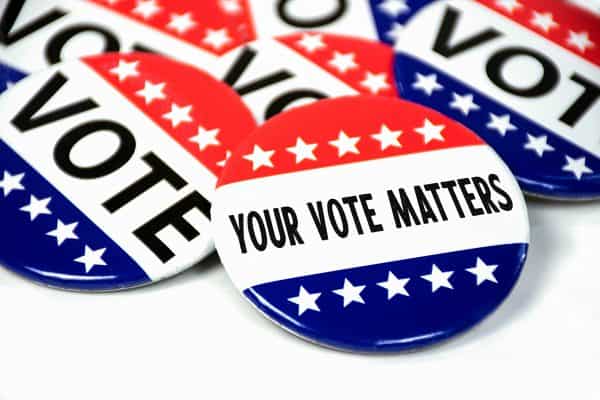Social Media Makes Tremendous Impact in Political Campaigns
One of the most contested presidential races in the United States was in 2016 when candidate Donald Trump beat Hillary Clinton by 77 electoral votes. Many people say Trump prevailed because of his successful digital marketing campaign. During that year, Trump gained 52 million followers on his Twitter account which made it the most followed account of a political leader worldwide on that particular social media platform.
Trump versus Clinton
There’s no doubt that President Trump’s digital marketing campaign was responsible for winning him that election. With “Make America Great Again” as his campaign slogan in 2016, Trump jumpstarted his march to the American presidency. He hired digital whiz Brad Parscale, founder of Giles-Parscale who used a ‘data-driven strategy’ to influence Americans to act in Trump’s favor.
Trump’s camp started with $2 million worth of investment in Facebook advertisements and targeted African-Americans and young women with another $150 million in Facebook and Instagram ads just a few weeks before election week. All in all, they spent over $70 million monthly in terms of ads, much more than Hillary Clinton. By and large, digital marketing made a big difference in the very close final voting. Incidentally, President Trump rehired Parscale for his 2020 re-election bid and shifted to a new slogan, “Keep America Great.”
Obama versus McCain
Candidate Barack Obama earned a decisive victory against his rival, John McCain in the 2008 presidential polls. He spent a record 10% of his media budget or $8 million on digital marketing which was $6.5 million more than McCain’s allocation for his online advertising efforts. Obama increased his budget to 15% in 2012 when he secured his second term as president of the United States.
Was this strategy of President Obama an indication of what is to come for American presidential elections in the future? Apparently, there has been a significant shift from traditional to digital advertising especially for political campaigns. The practice of political parties implementing digital marketing is no longer new even in the United Kingdom.
During the UK’s general election in 2015, The Conservative Party disbursed £1.2 million for their digital marketing efforts. On the contrary, the Labour Party spent only £200,000. At the same time, some of the Labour party stalwarts believed that social media platforms like (Facebook) was among the reasons for their loss in that election.
Another Digital War in November 2020
Digital marketing might not be the only reason for President Trump’s win four years ago. However, the platform will definitely play a big role and will continue to have a considerable impact in this year’s elections. It has changed practically everything in political campaigns in 2016 and will do it again in 2020.This ‘new order’ in politics enables candidates to drum up support by means of direct access to the electorate, personal messaging and enhanced analytics. It is not a matter anymore of ‘how you run your campaign’ but ‘how you can win the election.’
Crucial Role of Digital Marketing
- Digital marketing provides candidates with direct access to the voting population. Through cutting-edge technologies (smartphones and tablets) in reading news and gathering information about different candidates, people get to know more about their candidates in person. This can help voters make the correct decision on election day.
- As a more affordable option in advertising, digital marketing can be used in engaging target groups in more meaningful ways. The political party’s reach to its audiences immensely increases through these advertisements as the inherent algorithms or systems of digital media. In fact, social media before was used only for personal interactions but is now commonly employed as an advertising medium to connect with brands, companies, celebrities, and politicians.
- Long before digital marketing became a household name, political candidates relied heavily on print, radio and television advertisements; direct mailing; cold calls, and field workers to spread the news about their candidacy and programs. Since reaching the population directly was not easy, messaging had to be generalized and political handlers hoped it was communicated the way it should be done.
- Through digital marketing, candidates can have interaction with the voting population through online messaging, directly answer queries, make comments, and engage with people (through Skype calls, Zoom and Messenger).
- Given the capability to immediately personalize messages, candidates are able to tailor content for sending out to target audiences. The candidate can always inform the voter regarding a collective concern on an issue, recommend a solution for addressing problems, and hopefully influence that individual’s vote.
- Increased engagement is the goal of digital marketing providers. Engagement varies at all times particularly for presidential contests. Even then, the goal of presidential aspirants is to engage their constituencies. In the 2016 polls, the turnout was 60.1% which was up compared to 2012. Arguably, the increase was partly brought about by the employment of online marketing tactics and tools.
Then again, because of digital marketing, presidential hopefuls can conduct more accurate surveys, participate in Q and A through the worldwide web, connecting with voters not only during rallies, meetings, and debates but also during the election process.
Analytics’ Function
For presidential contestants, digital marketing eliminates the factor of speculation from social media campaigns as well as content development for messaging. Analytics makes it viable to determine the progress of a political campaign, and identify strengths and weaknesses, and where adjustments or changes to certain strategies are needed. For instance, with digital marketing it is possible to verify if hashtags used are popular, appropriate or are not getting positive results. Thus, waste of time and resources can be avoided immediately.
A Final Push before November
Only several months are left before the presidential elections are held in the country. It is now a matter of how candidates’ strategists will make use of what they have in their campaign arsenal.
Resources
https://digitalmarketinginstitute.com/blog/how-social-media-can-enhance-political-campaigns


